Short skis can absolutely deliver speed - but that's not the whole story. While longer skis are traditionally seen as the go-to for speed and stability, modern short skis bring a fresh approach. They’re agile, easier to turn, and perfect for recreational skiers who prioritize control and fun over pure downhill racing. Brands like Snowfeet* are proving that shorter skis, with their smart designs and materials, can handle speed while excelling in tight turns and crowded slopes.
Here’s the quick takeaway:
- Short skis: Great for carving, quick turns, and control. Ideal for most recreational skiers.
- Long skis: Better for high-speed stability and powder, but less nimble in tight spaces.
- Snowfeet options*: From compact 38 cm Mini Ski Skates to 120 cm Short Skis, there’s something for every style.
Whether you're weaving through trees or cruising down groomed trails, short skis offer a balance of speed and maneuverability that’s hard to beat. Keep reading to see why this myth about long skis might need a rethink.
Snowboarder tries Snowfeet* | Which Snowfeet* Short Ski is the Best? | Snowblades 44, 65, 99 Review
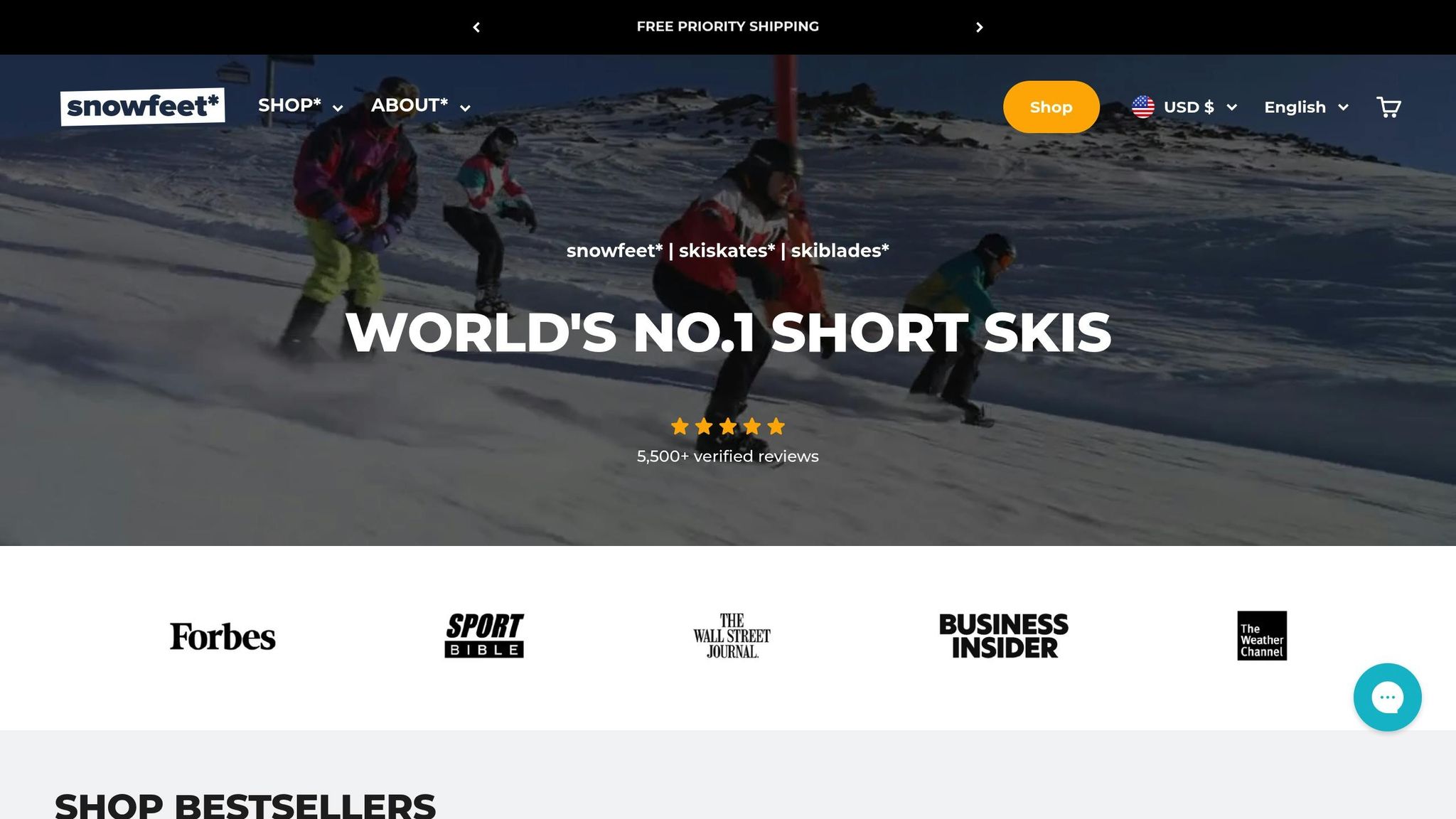
Why People Think Long Skis Are Always Faster
For years, the idea that longer skis automatically mean faster speeds has been ingrained in skiing culture. This belief didn’t just appear out of thin air - it was heavily influenced by ski manufacturers' marketing strategies.
How Ski Brands Focused on Length Over Performance
Companies like Rossignol, Atomic, Elan, and Head spent decades pushing the mantra that "bigger is better." Back in the day, if you were 5'9", you were expected to use skis around 200 cm long - that’s over 6.5 feet! Fast forward to today, and the average adult male typically skis on lengths between 160 and 177 cm. This shift highlights how much ski design has advanced.
The marketing pitch was straightforward: “Want expert-level speed? You need longer skis for better control.” And while experts of the time claimed that longer skis offered superior stability at high speeds, this advantage was mostly relevant at speeds recreational skiers rarely hit.
For manufacturers, this approach made things simpler. Promoting longer skis as the key to speed and stability allowed them to streamline their product lines. But what worked in theory didn’t always align with how most people actually ski.
Why the "Longer Is Faster" Myth Stays Alive
Even with all the advancements in ski technology, the belief that longer skis are inherently faster still lingers. Traditionally, longer skis were associated with higher speeds, and shorter skis were thought to be for beginners who needed easier turns at slower speeds. Visit a traditional ski shop today, and you might still hear this outdated advice: shorter skis for beginners, longer skis for advanced skiers tackling powder or crud.
This mindset has stuck around partly because it’s been repeated for so long. It’s also psychological - many skiers assume that choosing shorter skis means sacrificing speed and stability. But here’s the thing: modern ski design has flipped this thinking on its head. Today, shorter skis can offer agility and speed, without compromising performance.
Another reason this myth persists is the industry’s focus on height as the main factor in ski sizing. While height is important, weight distribution matters too. For example, heavier skiers may benefit from longer skis to ensure their weight is evenly distributed, but that doesn’t mean longer skis are universally better.
In truth, shorter skis can boost your speed, confidence, and overall performance on the slopes. Up next, we’ll dive into how modern ski design is rewriting the rules and proving that shorter skis can be just as powerful - if not more so - than their longer counterparts.
How Short Skis Actually Work for Speed
Speed on skis isn’t just about length - it’s about how all the components of the ski come together. Modern short skis, like Snowfeet*, are built to deliver both impressive speed and exceptional control, often outperforming their longer, more traditional counterparts.
Smarter Materials and Better Design
Today’s short skis are crafted using cutting-edge hybrid materials. These include over 30 components such as carbon fiber, fiberglass, and metal alloys, all working together for top-tier performance. Some even incorporate graphene - a material that’s just one atom thick yet incredibly strong. Snowfeet* Skiblades take full advantage of these advancements. Their sandwich panel construction ensures a lightweight build that offers tailored flex, giving you the stability you need for speed without the extra heft of long skis.
The parabolic shape of Snowfeet* skis is another game-changer. For instance, the 120 cm model features a narrow 7.8 cm waist, which allows for fast, responsive carving and helps you maintain speed through turns. This design strikes a balance between longitudinal stiffness (for stability) and torsional stiffness (for sharp, controlled turns). What does that mean for you? Smoother, faster carving with better control on the slopes.
"Vibration control on skis works much like a car's suspension system, which improves control by maintaining contact between the tires and the road. If there is air between tire and road, no amount of steering will have any effect. The same is true for skis and snow: no contact means no control" – Anthony DeRocco, K2 director of product development.
This idea of keeping constant contact with the snow is a major advantage of shorter skis. It’s what helps them deliver both speed and control, even when you’re really pushing it. These thoughtful design elements make turning smoother and more precise.
Speed Meets Easy Turning
Thanks to their unique construction, Snowfeet* skis combine high-speed stability with the ability to make quick, precise turns. Unlike longer skis that can slow you down during turns, Snowfeet* are designed to keep your momentum going.
Shorter skis also make it easier to maintain a centered stance, which is key for managing speed on modern skis. The Snowfeet* 120 cm Short Skis, with their 8-meter turn radius, allow for tight and controlled turns. Traditional long skis, on the other hand, require wider turns and more space to change direction. This makes Snowfeet* a great choice for skiers who want both speed and agility.
Whether you’re cruising down groomed trails, cutting through powder, or tackling mixed terrain, these skis adapt quickly to keep you fast and in control - even when conditions get tricky. With their blend of speed, maneuverability, and ease of use, they’re a versatile option for all kinds of skiing adventures.
Snowfeet* vs Long Skis: Performance Comparison
Snowfeet* short skis bring a fresh twist to the slopes, outperforming traditional long skis from brands like Rossignol, Atomic, Elan, and Head in key areas. While the ski industry has often championed longer skis for their performance, Snowfeet* focuses on agility and convenience, appealing to a wide range of skiers. Let’s break down how these differences play out across various snow conditions.
Speed and Turning on Different Snow
On groomed runs, Snowfeet* short skis truly shine. With their 99 cm Skiblades and 120 cm Short Skis, they deliver precise carving and quick turns, making them ideal for navigating crowded slopes. Longer skis, on the other hand, often require wider, more deliberate turns, which can feel sluggish in busy areas.
In powder, longer skis from brands like Head or Elan do provide better float, but Snowfeet* skis hold their own with their nimble design. Their agility allows for rapid direction changes, which is especially handy on uneven terrain like moguls or bumps. Techniques like quick "heel-toe" or scissor movements are easier to execute with Snowfeet*, giving you better control and stability. While long skis might have a slight edge on icy patches, Snowfeet* skis excel in responsiveness and maneuverability, making them a versatile choice for varied conditions.
Easy to Carry and Use
One of the standout features of Snowfeet* Skiskates is their portability. Weighing just 1.6 kg (3.5 lbs) and measuring 44 cm (17 inches), they’re light and compact enough to fit in most backpacks. Compare that to traditional skis, which are not only heavier but also much bulkier, often requiring specialized carriers or racks.
Snowfeet* also feature adjustable bindings that accommodate a variety of boots, making them incredibly convenient for skiers on the go. This level of portability and ease of use is something you simply don’t get with conventional skis.
Easier Learning for New Skiers
For beginners, Snowfeet* products make skiing less intimidating. Their natural stance removes the awkwardness often associated with long skis, allowing new skiers to focus on building their skills without feeling overwhelmed by their gear.
Thanks to their intuitive design, which supports balance and keeps the center of gravity easier to manage, learners can quickly gain confidence. Traditional skis from brands like Rossignol or Atomic often require weeks of practice to master basic techniques like turning and speed control. In contrast, Snowfeet* skis offer a much faster learning curve, making skiing more accessible and enjoyable for newcomers. This simplicity and ease of use open the door for more people to experience the joy of skiing without the steep learning curve of heavier, more demanding equipment.
sbb-itb-17ade95
What Experts and Users Say
Professional Reviews of Snowfeet* Speed
When it comes to comparing long skis and shorter options like Snowfeet*, experts highlight a key difference: stability versus maneuverability. Long skis are known for their ability to handle high speeds with ease, but shorter skis, like Snowfeet*, excel in quick turns and tighter control. Professional ski instructors emphasize that the right equipment depends on your skiing style and terrain.
"Longer skis go faster and have more stability at high speed. These things would be a pretty huge step in a reverse direction for most skiers trying to have fun." – Hefi
"This is true but only in a straight line. Snowblades are highly maneuverable but you're nuts to go real fast on them. Different tools for different jobs. You don't ski slalom on a GS ski, you'd skid all over the place and get a terrible time." – IceCoastCoach
These insights underline the idea that shorter skis, while not built for breakneck speeds, offer a unique edge when it comes to agility and versatility.
Real User Experiences
The feedback from users paints an exciting picture of Snowfeet*. Take Atanas T. from Sofia, for example - he clocked an impressive 45 km/h on black runs. Meanwhile, Zvonimir from Tokyo praised the 99 cm skiblade for being easy to handle on groomed trails, icy patches, and even deep snow. For beginners, the learning curve seems manageable too. Courtney Luckadoo from Marion shared that she mastered a green run on her first try and tackled a blue run on her second outing.
Michael, an experienced user, summed up the experience perfectly:
"Extremely fun but initially demanding. Begin on a gentle slope to master control. They pick up speed rather quickly and if it's too much of a slope it's hard to get the edges to grab and stop." – Michael
Users also rave about the portability and natural feel of Snowfeet*. While there’s a bit of an adjustment period, the payoff is clear: they combine speed and control in a way that sets them apart from traditional long skis from brands like Rossignol, Atomic, or Head. Both expert opinions and user experiences show how Snowfeet* deliver a fresh take on skiing, blending smart design with real-world thrills.
Which Snowfeet* Product to Choose
Snowfeet* Product Options
Snowfeet* has a lineup of short skis and skates designed to match various skiing styles and terrains. Here’s a quick breakdown:
- Mini Ski Skates (38 cm): At $150, these are compact and lightweight, ideal for groomed slopes. They’re easy to carry and deliver solid performance.
- Skiskates (44 cm): Priced at $390, these feature a wood core, giving you better speed and control - perfect for those who love precision.
- Snowfeet PRO (50 cm): For $199, these combine portability with performance. Adjustable bindings and extra durability make them a versatile choice.
- Skiblades: Available in two sizes - 65 cm ($450) and 99 cm ($490) - these offer agility and a near-traditional skiing experience. The 99 cm model is also great for carving and snowparks.
- POWDER (99 cm): Also $490, this model is built specifically for deep snow, offering excellent float and maneuverability.
- Short Skis (120 cm): At $690, these are the closest to traditional skis but in a compact form, giving you a balanced mix of performance and portability.
Now, let’s figure out which one fits your skiing style and goals.
Matching Products to Your Skiing Goals
Here’s how to choose the right Snowfeet* product based on your skiing environment and what you want to achieve:
- For speed on groomed slopes: Go for the Skiskates. Their wood core and pro-grade bindings provide stability at high speeds and make quick turns a breeze.
- For carving and versatility: The 99 cm Skiblades are fantastic. They’re great for carving, balancing, and even landing tricks in snowparks. As noted, "better for carving, landing in snowparks, and skiing in powder".
- For all-around performance: If you’re tackling mixed terrain, check out the Mini Ski Skates or Snowfeet PRO. These are lightweight and versatile, making them perfect for everything from resort slopes to hiking trails. Snowfeet* highlights their adaptability for "hiking, cross-country trails, and sledding hills".
- For beginners: The 65 cm Skiblades or Snowfeet PRO are your best bet. Their shorter length makes them easier to turn, helping you learn faster. As the experts say, "Beginners should choose skis that are shorter and easier to turn".
- For powder lovers: The POWDER (99 cm) model is your go-to. It’s designed to float in deep snow while still allowing precise control. Remember, "shorter skis/skates offer increased maneuverability and agility, longer skis provide better floatation in powder".
Lastly, consider the bindings - Basic, Standard, or Pro X. Snowfeet* advises choosing based on how you like to ride, so you can find the perfect balance of speed and control for your style.
Conclusion: Short Skis Can Be Fast
For years, brands like Rossignol, Atomic, and Head have championed long skis as the go-to for speed. But Snowfeet* is flipping that narrative, showing that short skis can deliver not just speed but also outstanding control.
Short skis bring together quick descents and precise handling. Snowfeet* models, consistently rated between 4.9 and 5.0, are a testament to this. Their standout performance comes from thoughtful design that balances responsiveness with a focus on the skier's experience.
Snowfeet* products are packed with features designed for performance and safety: metal edges for a solid grip, safety bindings, and heel brakes for better control. Their Skiskates, built with a wood core, offer the stability that seasoned skiers look for. Meanwhile, models made from lightweight plastic are easy to carry without compromising on strength.
"Compared to long skis, short skis are easier in all means of the word: they feel lighter on your feet, they are easy to carry around, and they are easier to master." - Snowfeet Team
What sets Snowfeet* apart is their versatility. While brands like Elan and Head often focus on specific types of skiing, Snowfeet* products excel across various terrains - whether you're gliding down groomed slopes, hitting the terrain park, trekking on trails, or even dabbling in cross-country skiing.
Another game-changer? Snowfeet* makes skiing more approachable. Their short skis take less effort to maneuver, making them perfect for beginners. At the same time, they pack enough performance to satisfy advanced skiers. The natural stance and reduced strain on your legs mean you can ski longer and with greater confidence, whether you're carving sharp turns or playing in the park.
Snowfeet* is redefining winter sports by blending skiing with skating. Their lineup ranges from the ultra-compact 38 cm Mini Ski Skates at $150 to the high-performance 120 cm Short Skis priced at $690. It's proof that pushing boundaries beats sticking to tradition when it comes to speed, control, and fun on the slopes.
Forget the old rules about ski length and speed. Short skis are fast, exciting, and shaping the future of winter sports. Snowfeet* is leading the charge.
FAQs
Can short skis like Snowfeet really match the speed and control of traditional long skis?
Short skis like Snowfeet pack a punch when it comes to speed and control, giving traditional long skis from brands like Rossignol or Atomic a run for their money. With their lightweight and compact build (typically between 38 cm and 120 cm), they’re designed for quick, sharp turns and smooth navigation through tight spots or tricky terrain. Whether you're just starting out or have years of skiing under your belt, these skis are a solid pick.
Here’s the big difference: long skis rely on their extended length to maintain stability, but Snowfeet’s shorter design amps up agility and responsiveness. On groomed slopes or in ever-changing conditions, they’re a dream to maneuver. Plus, their lighter weight means less effort to handle, so you can feel more in control without losing out on speed. Whether you’re carving up the mountain or venturing off the beaten path, Snowfeet short skis offer a fast and exciting twist on your usual skiing gear.
What types of terrain or conditions are best suited for short skis?
Short skis, like the 65 cm and 99 cm Snowfeet* Skiblades, shine in certain conditions. They’re ideal for narrow, twisty trails, soft snow, or spots where quick, sharp turns are a must. Their small size gives them incredible agility and makes them super responsive - perfect for beginners or anyone tackling tight spaces.
On the other hand, traditional long skis from brands like Rossignol or Atomic are built for stability at high speeds on wide, open slopes. But when it comes to tricky or cramped terrain, short skis deliver a level of control and flexibility that’s hard to beat. If you’re into winter sports and want a ride that’s both fun and dynamic, short skis are definitely worth a try.
What should beginners know when deciding between short skis and traditional long skis?
For those just starting out, short skis like Snowfeet* can make a world of difference. They’re super lightweight, incredibly responsive, and way easier to handle. This makes them ideal for picking up the basics and gaining confidence on the slopes. On the other hand, traditional long skis - like those from well-known brands such as Rossignol or Atomic - offer better stability when you’re zooming at high speeds. But for beginners, their size and weight can feel a bit overwhelming.
What sets Snowfeet* apart is their compact design and flexibility. They’re great for navigating tight turns and tackling different types of terrain without much hassle. If you’re new to skiing, short skis are a fantastic option to make the learning process simpler and, honestly, a lot more fun.







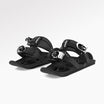






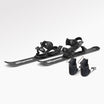






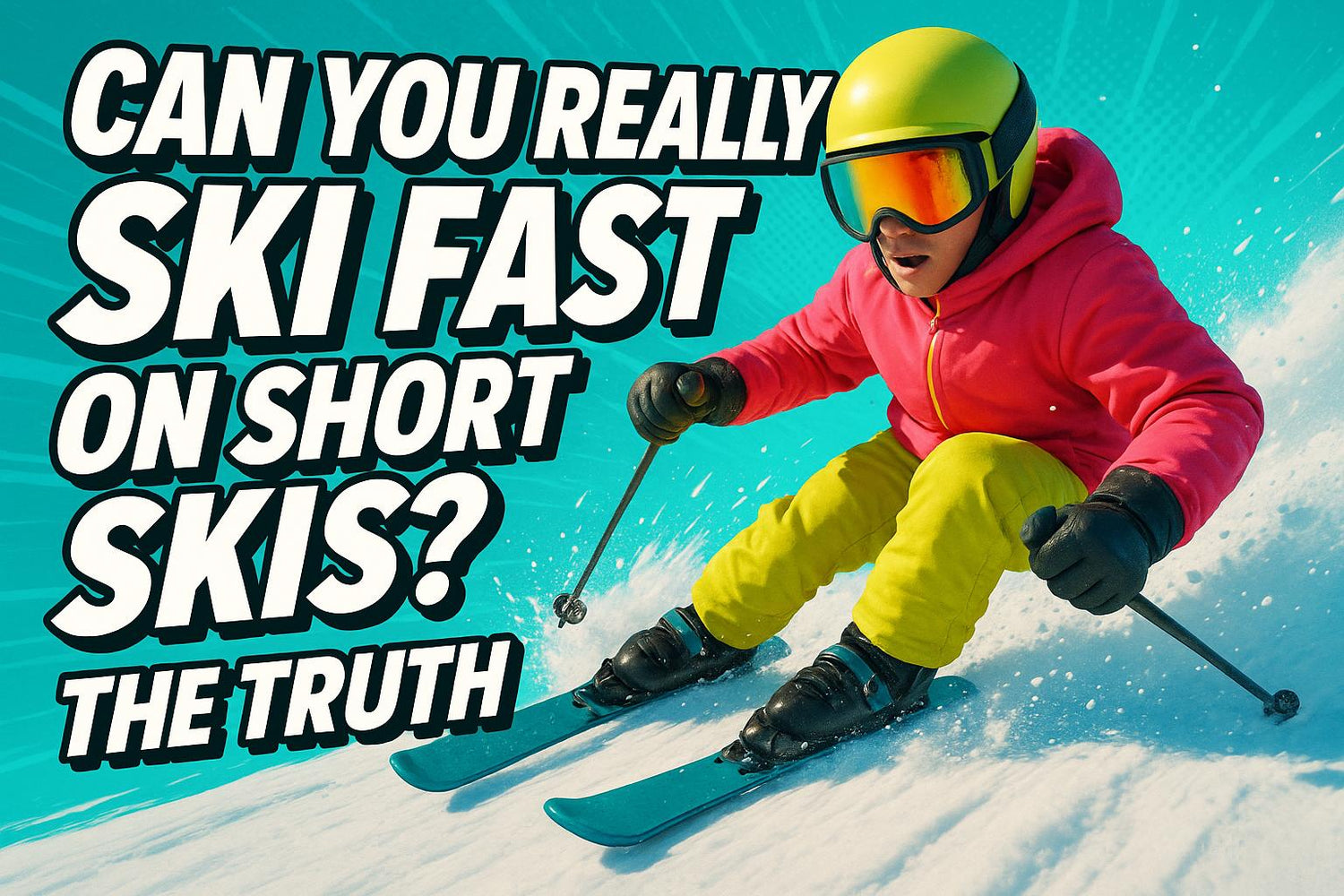
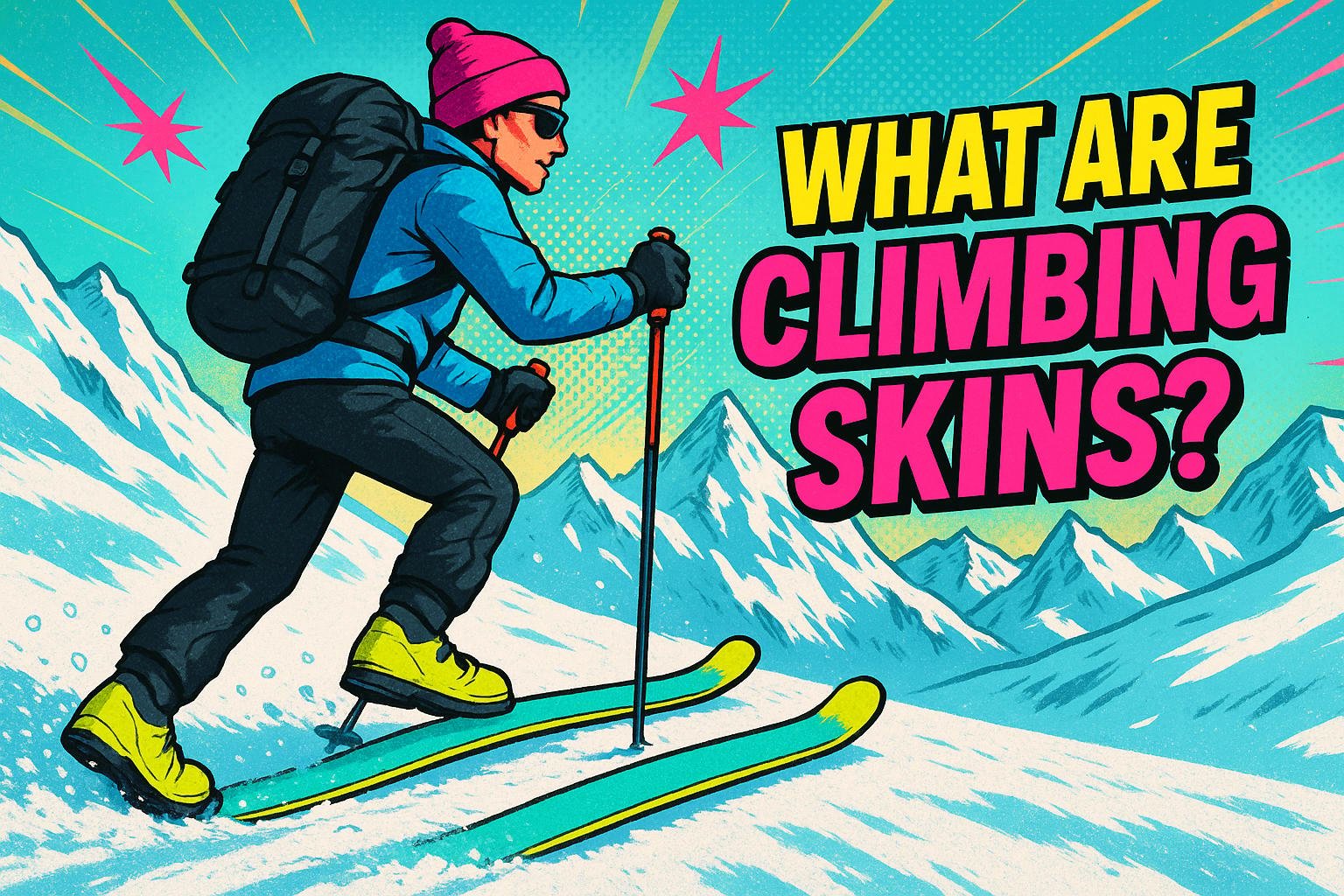
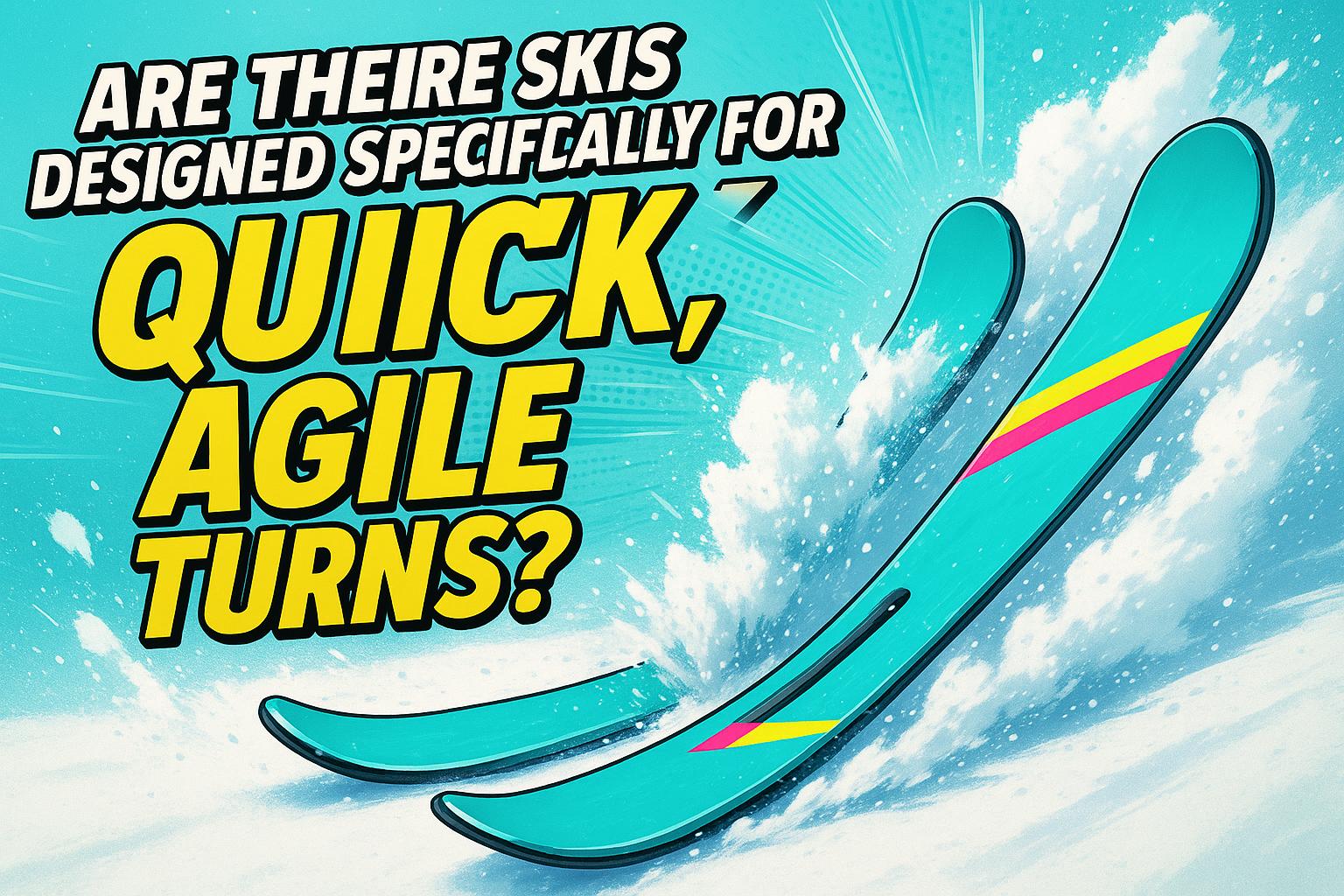

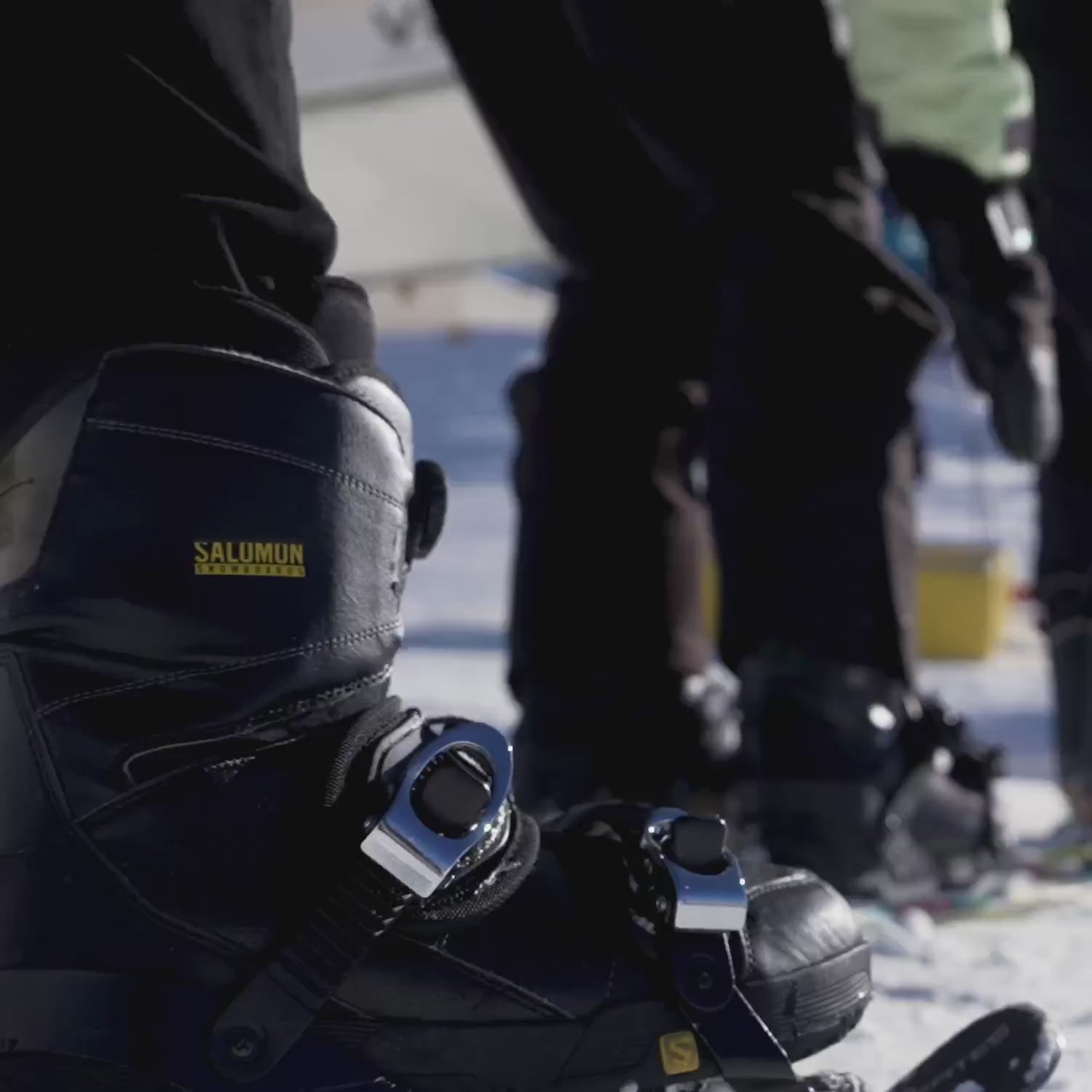


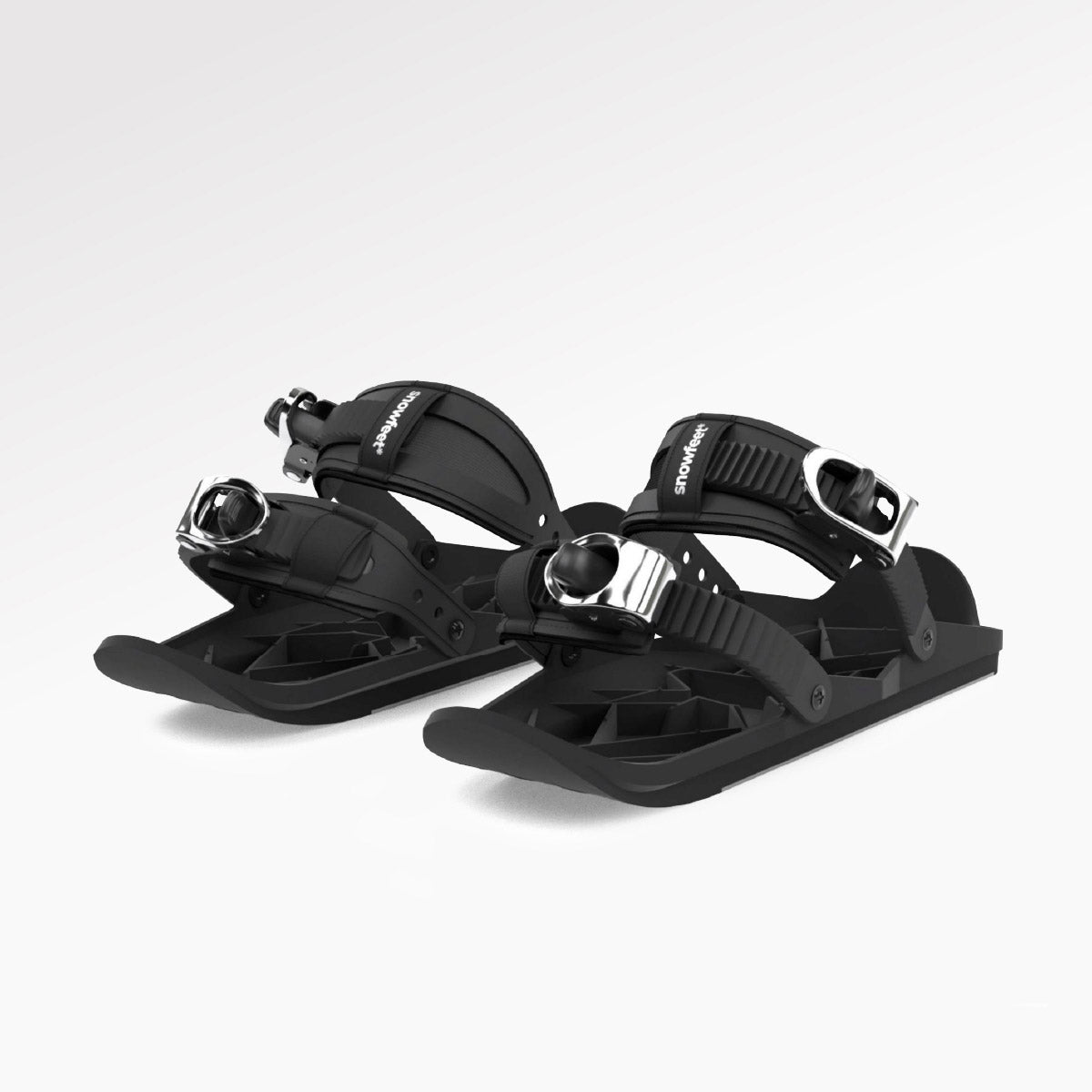
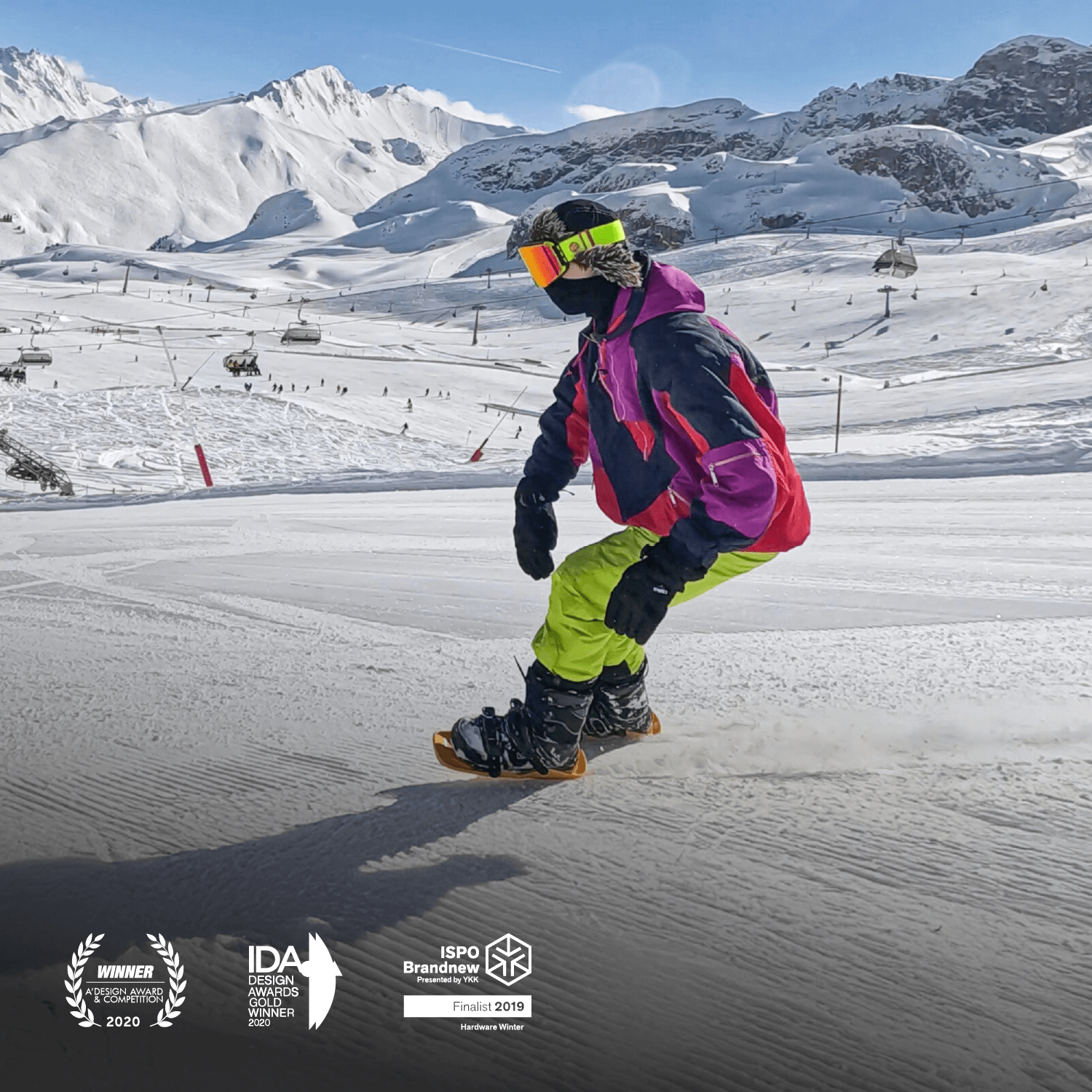

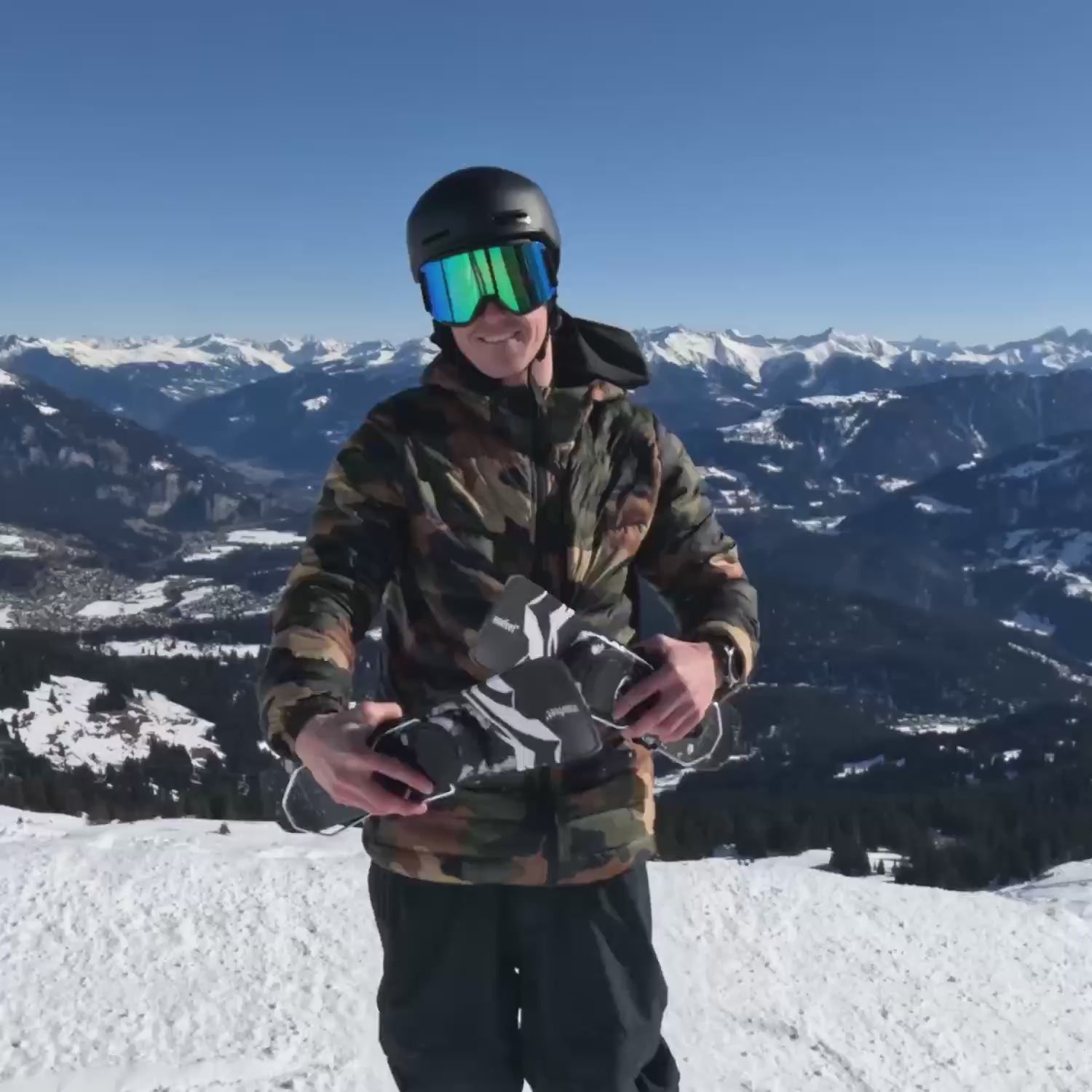

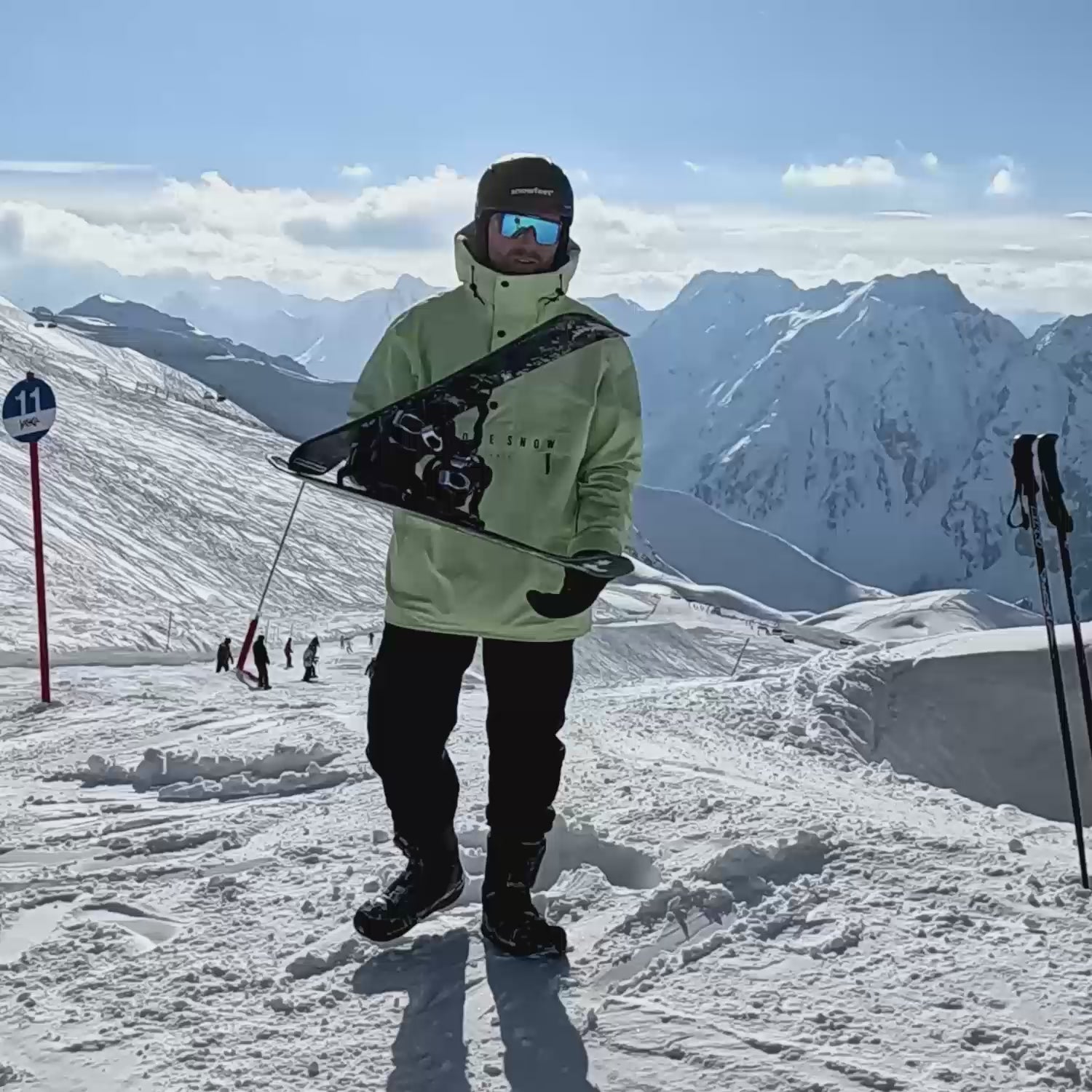
Leave a comment
This site is protected by hCaptcha and the hCaptcha Privacy Policy and Terms of Service apply.